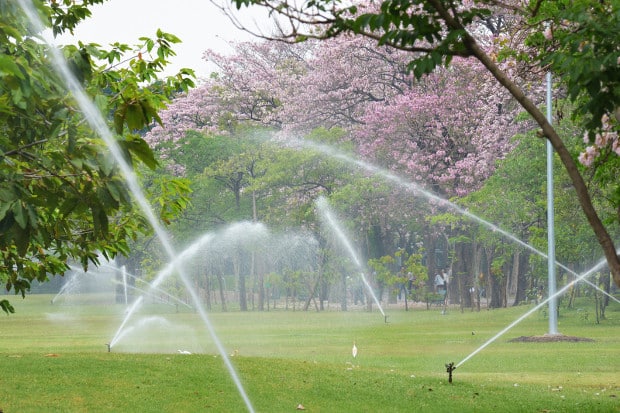Dry Weather Needs Proper Watering
Dog Days, Dry Days
Dry spells are not uncommon, especially in the mid- to late-summer seasons. The long stretchy of sunny days can go on without relief, for either people or plants. When your lawn and landscaping begins to feel the burn, it is up to us to provide the supplemental irrigation that your grass, shrubs, and flower beds need.
Frequency of watering
There are many factors that go into how often a particular landscape will need water. These include:
- Temperature
- Rainfall, or lack thereof
- Humidity levels
- Season
- Plant material, variety, and type
- Light intensity and density
In this particular article, we are talking specifically about the middle and end of summer, in the continental subtropical climate of Central and Northern Texas. So, our list of factors will most often look something like this:
- Temperature: 90-degree days, 70-degree nights
- Rainfall: minimal, until October
- Humidity levels: high, most days 70% and higher
- Season: mid-late summer
Plant-specific information and lighting information will vary for each home individual lawn and landscape setup. The main thing to remember is that if a plant is one of many, closely packed, with minimal root space, in full sun, their watering needs will increase in our mid-late summer seasons.
Speed of watering
When the weather is dry, watering by hand is not an effective method, and your plants will not really thank you for it. Using a hose with a nozzle on the end, or your thumb over the opening, applies the water too quickly, over too little time; it does not allow the water to penetrate deeply and thoroughly into the soil. Watering should be done at a slow rate, over a longer time period, to allow your plants the best irrigation and provide the best results. The rule of thumb, for medium-textured soils, is one inch of water each watering session. This translates to six inches of water penetration in the soil itself.
Length of watering
The only way to determine how long your individual irrigation system takes to deliver the prescribed “inch of water” is to measure the water. The way to do this is to take some kind of cans (tuna, cat food, tin vegetable cans) and open them. Place them where they will receive water from your irrigation system. Water your lawn, and time the session, until the can is full to one inch up the side. The easy way is to use tuna or cat food cans, as most of these are close to, if not exactly, one inch tall. Once the can has collected one inch of water, you know how long it takes your irrigation system to provide that one inch of water to your lawn and landscape.
There may be a need for staggered watering session, in the event of a sloped lawn or a very heavy clay soil base. Staggering the needed watering into smaller segments, like ten minutes on and twenty minutes off, ensures that the water actually penetrates into the soil instead of just running off or pooling up.
When to water
Morning is the best time to water, as the plants are “just waking up,” just like us. They will draw in water from their roots most effectively during the morning hours, and will be able to dry out their leaves and stems as the sun rises higher. This prevents foliage diseases and mildew problems.
If you need help determining the best irrigation solutions for your lawn and landscaping, give Andy’s Sprinkler a call or a click today! We specialize in irrigation and hydration options for our communities here in Texas. Everyone can have the green, glowing lawns they dream of!

